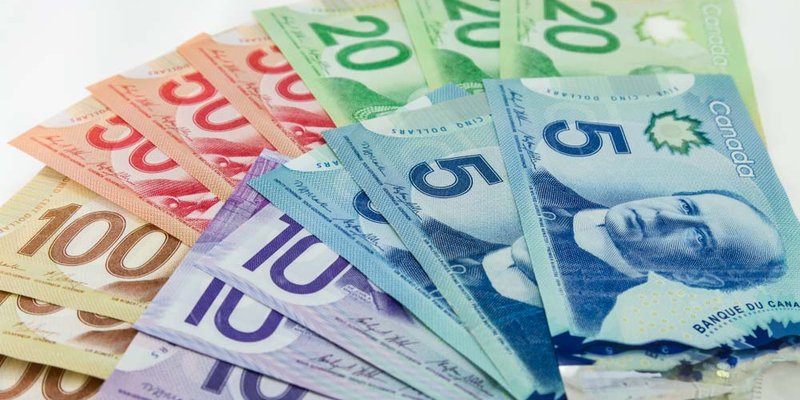
If you are not redirected within 30 seconds, please click here to continue.
Samedi: 10h – 16h HAE

If you are not redirected within 30 seconds, please click here to continue.
If you are not redirected within 30 seconds, please click here to continue.
Table of Contents
Greetings, newbie investors. This week on the Newbie’s Guide to Online Trading we’re attacking another jargon jabberwocky: forex. Also referred to as FX, which stands for foreign exchange, you’ve probably seen this displayed as a trading option offered by your online brokerage. So what is forex and how does it differ from investing in traditional equities? Turns out, it's trading in the fast lane. The leverage is greater, the stakes are higher and the market turns on a dime.
Special FX
Forex is a trading market, like the TSX or NYSX, and it operates on an international scale – but that’s where the similarities end.
Rather than trading stock in a company, or commodities like oil or gold, forex is where the world’s monetary currencies are swapped – all based on how a nation’s dollar, pound, or yen holds up against one another. This activity occurs 24 hours, five and a half days a week, and on the global scale.
It’s a decentralized market, meaning operations dispersed worldwide serve as home base for activity. Fuelled by exchange rates, national politics and the general economic climate, forex trades are the most liquid in the world – meaning it provides investors with easy access to their money. And for those overwhelmed by the seemingly endless sea of stock options, forex also offers a perk in that currencies are the only instrument offered.
A note of caution here – the forex market is highly volatile, and not necessarily ideal for newbies placing their first trades. A blessing and a curse lies in the massive amount of leverage available to investors – the ability to borrow funds in order to complete an investment. While margin requirements for a traditional equity trade are usually a minimum of 50%, forex investors can often trade for as little as 1% of the trade cost. While this opens up a world of investment possibilities – if it comes crashing down, it comes down hard.
Yours for mine
Trading amongst the world’s currencies was once reserved for the very wealthy – but with the advent of the internet and online brokerages, your average investor can now get in on the game.
So how exactly does it work? The main difference between forex and equity trading is that in order to deal with currencies, you must simultaneously buy and sell. It might seem a bizarre concept to wrap your head around, but consider this – as money is exchanged for money and not a good or service, the currency paid is also considered a sale back to the market.
Another main difference is how the instruments appear. A traditional equity will be represented by its ticker symbol and quote (e.g. LULU at $30 CAD per share). Forex trades, however, are represented by currency pairs. Here’s an example of how they’re structured: USD/CAD = 1.2000. What the heck does this mean? The currency placed to the left of the pair, in this case the U.S. dollar, is the base currency. This is the currency that is being purchased by the quote currency (the Canadian dollar in this case), placed to the right.
Simply put, this means that every $1.20 Canadian are valued at US$1. When you purchase a currency pair, you’re paying the amount of the quote currency per unit of the base currency. When you sell that pair, the base currency is the amount sold in exchange for the quote. The difference between the base and the quote currency is referred to as the spread - similar to the base-point system in mortgage rates. The smallest unit of difference between the two is referred to as a pip.
Riding on the greenbacks
While a currency pair can be a combination of any two currencies, the most commonly traded pairs are referred to as the majors, making up almost 85% of all trades.
These are EUR/USD, USD/JPY, GBP/USD, AUD/USD, USD/CHF and USD/CAD. As a base, the USD is most commonly used – in fact, when pairs don’t include it, they’re referred to as cross pairs. Then there are the three commodity pairs, which represent countries with large amounts of commodities, for example, natural resources. These are USD/AUD, USD/NZD and USD/CAD. Investors need to hone their strategy for these pairings in according to the commodity performances in those countries.
A golden history
How did the forex system come to be? As it turns out, it’s the result of world wide attempts to standardize monetary worth dating back to 1875, when the Gold Standard Monetary System was established to regulate gold prices.
Rather than barter blindly, nations could anchor actual monetary value to their currency based on their national gold holdings. As there’s only so much gold to go around, and as the need for industrial spending (and wartime expenses) came to a peak, the system was abolished in 1971, and the American dollar became the trading standard for the world.
While this movement (referred to as the Bretton-Woods system) also introduced regulatory bodies such as the International Monetary Fund, International Bank of Reconstitution and Development, and the General Agreement on Tariffs and Trade, it was also not to last, and floating foreign exchange currencies became globally accepted in 1976.
Get money-saving tips in your inbox.
Stay on top of personal finance tips from our money experts!











